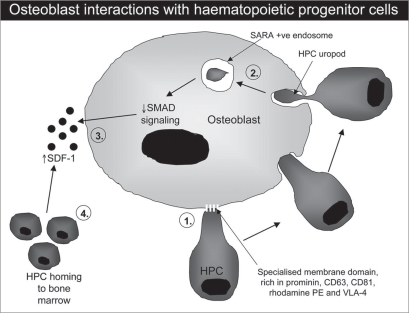Figure 1.
Schematic representation of the events occurring during HPC-osteoblast interactions. HPCs interact with osteoblasts through specialized regions of the HPC membrane (uropod), expressing high levels of prominin, CD63, CD81, rhodamine PE and Vla-4 (1). Following contact, portions of the uropod membrane are actively phagocytosed by the osteoblast into Sara+ve endosomes (2). In response, osteoblast Smad signaling is reduced, leading to increased SDF-1 production (3) and ultimately increased HPC trafficking, proliferation and survival within the bone marrow (4).

